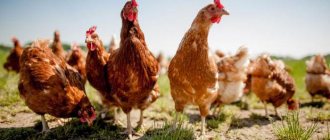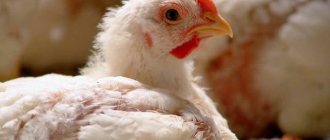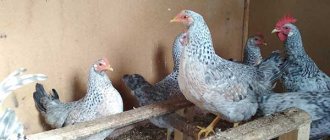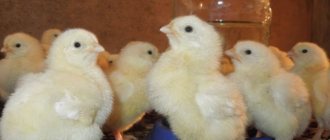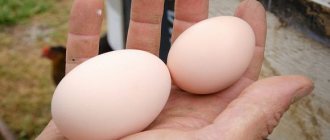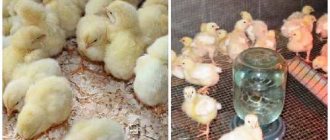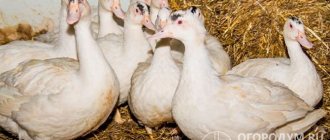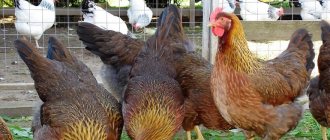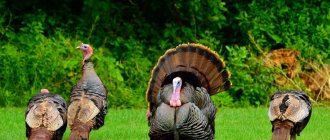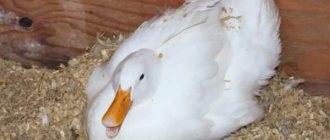Inexpensive and high-quality meat for your own needs or for sale can be obtained by raising broilers. If there are unused rooms on the site, they can be used by doing a little modernization. Raising broilers at home for beginning farmers requires special knowledge: how to choose the right breed or line, provide adequate nutrition for a certain type of chicken, what conditions and regimes are needed during different periods of chicken growth. These issues are discussed in detail in the following article.
Growing time
The profitability of raising broilers for meat determines the duration of their maintenance. The optimal period is up to 2 months. After the seventh week of bird growth, weight gain slows down, although broilers consume the same amount of feed as in the first stage of life.
To make matters worse, in the third month of cultivation, the pectoral muscles quickly grow and become fat. In order for chicks to gain sufficient body weight in the shortest possible time, it is necessary to feed complete broiler mixtures, thanks to which chicks can reach a weight of 2.8 kg in 5 weeks.
Broilers grow fastest between the first and fourth weeks of life, after which the growth rate decreases.
How are meat chickens fed?
When feeding broiler hybrids, you cannot rely on nature. The man raised the breed, and he calculated a clear feeding scheme to obtain a certain mass within a deadline.
The whole life of a chick is divided into periods and each of them requires its own set of important substances. You can, of course, take a difficult road and choose food on your own, through numerous mistakes. But it is best for novice poultry farmers to purchase ready-made feed that corresponds to the age stage of the bird.
Large farmers who have their own farms actively add dairy waste, greens from the fields, etc. to the diet. All this significantly reduces the cost of keeping birds. The chicken feeding scheme comes down to three alternating stages:
- pre-launch – for chicks up to 5 days;
- starting – up to 1 month;
- finishing - all the way to the bottom.
It is important to add fine gravel to the feeders from the first days of life.
First five days
Newborn chicks immediately receive a drink - 1 tsp. sugar per 1 liter of water. Next, the boiled egg crumbles, but experienced poultry farmers suggest feeding it with millet, mixing it with egg powder.
During pre-start feeding at home, prepare the following composition:
- milk powder – 13 parts;
- corn – 50 parts;
- barley – 8 parts;
- wheat bran (wheat) – 16 parts;
- soybean meal – 13 parts.
The total amount of feed for each chicken during this period is 10 g. By 14 days of age, its amount is gradually increased to 25 g/day.
It is important to remember that water must always be present. Additionally, up to 3 crystals of potassium permanganate are added to it, alternating it with glucose (sugar).
From six days to a month
Week-old individuals are transferred to feed at the starting stage. The finished mixture is moistened with whey, additionally mixing brewer's yeast, eggshells, cottage cheese, boiled egg, onion (for parasites in the intestines). The mass fraction of greens is adjusted to 10%.
Starter feed for self-cooking:
- fishmeal – 7 parts;
- corn – 48 parts;
- chalk – 1 part;
- brewer's yeast – 5 parts;
- soybean meal – 20 parts;
- feed fat – 3 parts;
- wheat – 12 parts;
- milk - 3 parts.
Gradually increasing the volume of feed, by 1 month it is brought to 120 g per 1 individual per day. Food is served in small portions up to 8 times a day. The chicks must peck everything, only after that a new portion is added. They keep adding potassium permanganate to water.
Do not leave wet food in feeders for a long time so that it does not turn sour and spoil. If the bird gets poisoned, weight gain will slow down significantly.
From a month to the final weight gain
Month-old birds are gradually transferred to finishing feed. Potato and vegetable peelings, eggshells, bakery leftovers, etc. are added to the finished feed. They continue to monitor the quality of the diet - no mold, spoilage or rot.
At home, finishing food is prepared from the following products:
- brewer's yeast – 5 parts;
- herbal flour - 1 part;
- corn – 45 parts;
- feed fat – 3 parts;
- cake – 16 parts;
- fishmeal – 4 parts;
- wheat – 14 parts;
- meat and bone meal – 3 parts;
- barley – 8 parts.
The total daily volume of feed is adjusted to 160 g per individual.
Poultry is transferred from one diet to another gradually, so that digestion is not disturbed.
Read about the most common disease - coccidiosis in chickens. We'll tell you how to avoid and treat it.
Breed selection
For small-scale farming of broiler chickens in the country, it is better to choose chicken breeds based on their general type of utility. The exception is raising broilers as a business; here, with certain investments in premises and equipment, it is advisable to choose the most intensive breeds.
Broiler chickens are specially selected chicken lines characterized by much faster daily growth than purebred chickens and lower feed consumption per 1 kg of body weight.
By growing quickly and achieving significant weight in a shorter time, broilers become relatively cheap to produce. The following broiler breeds are often used for meat production:
- Ross 308
- Ross 508
- Ross 708
- Ross PM3,
- Cobb 500
- Hybro G+,
- Hybro PN+,
- Flex,
- F15,
- JA57.
According to reviews, the most popular broiler breeds for home growing technology are:
- Cobb 500,
- Ross 308,
- Flex.
Broilers were bred from the White Rock chicken line, which was female, and the Cornish line, which was male. To obtain broiler product lines, lighter mother breeds are used, connecting them with heavier males.
There is no perfect broiler line. Each breeder has his own way of using the potential of his herd to achieve maximum profit. Some may achieve high growth in one broiler line and others in another.
It is recommended to purchase broiler chickens (day-old or grown-up) from incubators.
Broiler chickens must have the following characteristics:
- fast growth rate;
- rapid achievement of the peak of average daily weight gain with low fatness;
- high slaughter productivity;
- good feed utilization and low consumption per 1 kg gain;
- ideal muscles of the chest, thighs;
- white plumage with white or yellow skin;
- fast plumage.
When wanting to buy chickens from the most intensive broiler lines that are more suitable for farm conditions, it is often forgotten that their growth potential is very high. This broiler requires:
- special living conditions;
- appropriate feeding;
- chicks quickly react to an unfavorable environment.
Disease Prevention
Raising broilers is quite a troublesome business. In order to avoid diseases to which chickens are highly susceptible, a set of preventive measures is used:
- From birth to 5 days, chicks are fed antibacterial drugs.
- Before day 10, individuals are fortified.
- On the 11th day - vaccination against Gumboro disease.
- From 12 to 16 days – vitaminization again.
- On day 18, re-vaccination against Gumboro disease.
- On the 19th day – vitaminization.
- From 21 to 23 days, preventive work against coccidiosis is carried out.
- Vitaminization continues until day 28.
The given scheme of preventive measures is a minimum program. But for those who raise large numbers of chickens for sale, this is not enough. Additional activities required:
- From 15 to 17 days - drinking drugs to increase immunity against hypovitaminosis and vitamin deficiency.
- Day 24 – additional vaccination against Gumboro disease.
- Day 27 – vaccination against Newcastle disease.
- From 28 to 32 days - drinking water and supplementing the food against hypovitaminosis and vitamin deficiency and increasing immunity.
Broiler poultry has very low immunity, and if it has contracted a virus or infection (and in recent years they have become more and more aggressive), it is almost impossible to cure it and bring it to the required weight limit.
Chicken coop - location, materials
When planning to place a chicken coop on your site, it is important to remember that chickens cannot tolerate:
- low temperature,
- high humidity,
- lack of oxygen.
Choose a place with a groundwater level no higher than 1 meter from the ground surface.
- Floor. The concrete base is poured. The floor level is made 20-30 cm above the ground level. Such a base will avoid problems with humidity and prevent gas exchange with the ground. The entrance to the broiler chicken coop is preferably located from the east.
- The walls are usually made of treated wood, brick or blocks, and the blocks are plastered. When breeding at home, wooden chicken coops are often built. Insulation, such as polystyrene, is placed between two layers of boards. The walls should be smooth on the inside - this will make cleaning easier and allow for thorough disinfection.
- Roof. A solid or gable roof is made of wood, PVC or tiles. Sheet metal is less suitable for a roof; it gets very hot in the summer and cools down quickly in the winter. A gutter is installed under the roof.
Mistakes of novice breeders
Although raising broilers does not present any particular difficulties, inexperienced owners do not always provide the chickens with normal living conditions. This leads to a decrease in productivity, and in some cases, to the death of birds. Common mistakes include:
| Failure to comply with temperature conditions | In an insufficiently warm room, chickens' immunity decreases. Exceeding the temperature norm causes lethargy and loss of appetite in birds. |
| Excessive humidity | Leads to the appearance of fungus and promotes the spread of pathogenic microorganisms. |
| Insufficient hygiene | Dirty feeders and bedding cause intestinal infections and intoxication with ammonia compounds. |
| Ignoring veterinarian recommendations | Saving on veterinary care can lead to significantly greater financial losses in the event of late or incorrectly selected treatment. |
Preparing and disinfecting the chicken coop
The floors of the chicken coop are thoroughly cleaned to ensure that no organic waste remains. You can clean vertical and horizontal surfaces as quickly, conveniently and efficiently as possible using a high-pressure washer with hot water.
Thoroughly wash the entire chicken coop:
- floors;
- walls;
- poultry house equipment for watering and feeding;
- fans;
- inventory.
Cleaning should not be limited only to the chicken coop; it is important to clean the auxiliary premises - granaries, feed storage sheds.
After thorough cleaning of the interior, chemical disinfection is carried out. Here are some ways to treat your chicken coop.
- Disinfection with a 3% ammonia water solution.
- Perform fogging with 1 liter of formaldehyde per 200 cubic meters, and the temperature of the chicken coop during fogging should be at least 18 ˚C.
- Disinfection with 3% sodium hydroxide solution.
- Disinfection with 3% sodium hypochlorite solution.
When using chemical disinfection, it is important to choose the right chemicals and use them in accordance with the instructions, observing safety precautions. The products available on the market do not have a broad spectrum of action, so they must be used in combination to obtain the widest possible coverage.
For example:
- copper sulfate – has fungicidal activity;
- formaldehyde – bactericidal and virucidal;
- ammonia water - destroys oocysts.
Various types of garden sprayers are used to apply disinfectant solutions.
After disinfection, the chicken coop is hermetically sealed, the ventilation is turned off (closed) so that the active substances included in the solutions work effectively.
When washing and disinfecting poultry houses, all remnants of the last broiler breeding should be removed. Using slaked lime or caustic soda solution, disinfect the area surrounding the chicken coop and outbuildings, including paths.
After disinfection, the walls and floors are whitened with a solution of slaked lime, and the object is allowed to dry completely.
Keeping Birds Healthy
To prevent rickets, coccidiosis and other dangerous diseases, vitamin and mineral supplements and coccidiostats are included in the diet of growing chickens. To reduce the risk of the spread of intestinal disorders, it is important to keep feeders and drinkers clean. Additionally, it is recommended to feed the chicks from days 5 to 7 with a weak solution of potassium permanganate.
Sick chickens are quarantined so that they do not come into contact with healthy individuals. Pharmaceuticals, including antibiotics, should only be given after consultation with a veterinarian. They are not used at the final stage of fattening to prevent medications from getting into the meat.
Due to the sudden weight gain in broilers, the load on the skeleton increases greatly, so they need more vitamins and minerals. You can introduce each component separately or use complex supplements that include the required set of biologically active substances (BAS).
Growing conditions
From the first days of care, birds need fresh air. Ventilation is not only the correct temperature regime, but also the exchange of gases (CO₂ and oxygen).
Temperature conditions, lighting
It is best to start heating the coop 48 hours before introducing the chicks to 33-35°C on the day of introduction.
The coop temperature should be around 33 degrees during the first week of raising. The recommended temperature on the floor is about 30 degrees. Chickens do not yet have their own body thermoregulation. Then every week the temperature should be 3-4 degrees lower because the birds begin to produce more and more heat.
The feed is poured before the chicks are introduced. It is better to place the food on paper near the drinking bowls. The sound of pecking on paper will attract the chicks in the first days after settlement, so they will find food and water more easily.
Access to water should be easy, in addition to the standard equipping of the chicken coop with regular drinking bowls, you need to place drinking bowls for chickens.
All buildings must be equipped with lighting of at least 20 lux (with lighting fixtures on), measured at bird level, illuminating at least 80 percent of the area.
Check production results at least once a week. Depending on how the chicks are growing, appropriate lighting should be used. If birds grow too quickly, their bones and heart cannot bear the load, and they have difficulty standing on their feet. In this case, reduce the amount of light so that the chicks reduce their feed intake and slow down their growth slightly. Some breeders keep their chicks in the twilight.
It is advisable to use low light when factors such as the predisposition of the chicken breed, feed and coop equipment do not allow obtaining too high results in relation to the development rate of broilers.
If chickens are growing too quickly and their growth is much faster than their development, you need to provide them with proper living conditions or reduce their growth rate.
Humidity, ventilation
It is preferable when the air humidity is in the range of 60-70%.
Humidity levels play a significant role in chick development:
- Too high humidity means high thermal conductivity of the air. When a room becomes overheated or overcooled, it quickly causes a decrease in the bird's immunity. Pathogenic microorganisms reproduce better in humid conditions, which facilitate the transmission of some diseases.
- When the air is too dry, the mucous membranes of the upper respiratory tract dry out, under such conditions excess dust is formed - dry air also contributes to infections.
It is important to remember good air exchange. Proper ventilation allows you to maintain indoor temperature and humidity at optimal levels.
When installing any fan, it is important that the air speed measured at bird height does not exceed 0.6 m/s.
Good ventilation allows dust to be removed from the coop. Dusty air is dangerous for birds:
- dust attacks the respiratory system;
- irritates the conjunctiva of the eyes, causing inflammation.
The conditions for keeping broilers are spoiled by the gases formed as a result of the decomposition of manure: carbon dioxide, hydrogen sulfide, ammonia. These gases harm the bird:
- Ammonia is harmful to broilers in high concentrations. With good ventilation, the amount of ammonia should not exceed 25 ppm. Ammonia easily dissolves in water and leads to the formation of toxic fumes that irritate the conjunctivae of the eyes and the mucous membrane of the respiratory tract.
- Hydrogen sulfide accumulates with insufficient ventilation, directly above the floor. It is much more irritating than ammonia. The concentration of this gas should not exceed 10 parts per million.
Ventilation and heating should be operated to avoid overheating and maintain proper indoor humidity.
Noise levels should be kept to a minimum, so fans, feeders or other equipment should be designed, located, operated and maintained so that they cause minimal noise.
Chicken coop area
The number of chickens per unit area is an integral technological factor, along with the concentration of energy and protein in the feed. It equally determines the efficiency of broiler breeding along with nutrition.
The maximum stocking density when raising broilers in cages, on a farm, in a barn or other conditions cannot exceed 33 kg/m² at any time.
As the chickens grow, the area allocated for them in the chicken coop should increase. In the last period, the maximum stocking density is no more than 10 birds/m². Broilers raised in denser stockings may have dirty and damaged feathers, and the droppings may become too dense and wet.
Stocking density depends on the time of year - in summer there should be fewer chickens due to too high temperatures, which at high densities can lead to mass mortality.
Broiler housing density depends on many factors, the most important:
- bird access to water and food;
- expected final weight;
- duration of fattening;
- chicken health.
The optimal equipment is determined primarily by the technical equipment of the chicken coop, including the ventilation system. Inadequate housing conditions make chickens susceptible to disease.
How to choose chickens?
The first step in organizing your own poultry farm is purchasing an initial batch of chickens. Some experts advise purchasing both chickens and cockerels to further obtain eggs and, accordingly, new chicks. But broilers practically do not lay eggs. And even if this happens, they lose their meat qualities.
Broiler chicken is a hybrid, an artificially bred result of crossing several different breeds. And like all hybrids, it has multiple differences in physiological and visual indicators.
chick body
The main difference between young broiler chickens and regular chickens is their fleshy body. Other features:
- rectangular body, wide chest;
- the stomach is toned and elastic, in no way bloated;
- thighs are muscular and strong;
- paws are short and thick for good stability with large weight gain;
- small wings, not sagging, tightly fitting to the body (in a calm state).
Another indicator is that the chick in the first week of life has a disproportionately large head. Over time, the body will increase in size and the necessary signs will be restored.
Color
Chicks are purchased at about 10 days of age. During this time, they will get stronger and the likelihood of their death from any disease is quite low. Those chicks acquired at a younger age will require more attention and slightly better living conditions. The color of the bird during this period is yellow, if there are other shading spots in the color - this chicken is an egg breed.
Broilers practically do not have scallops. If they are present, they are very small, there are no earrings at all. This is due to the fact that meat varieties are not intended for procreation. The beak and paws are various shades of bluish-gray.
Weight indicator
The average weight of a chick is about 45 g (in egg breeds up to 35 g). By the time of sale, 10 days old, the chicken will weigh 200-250 grams. On day 15 - about 500 g.
It is important to measure the bird’s weight not only at birth, within 1 month, but also throughout its growth. So, at the beginning of the second month, a chicken cannot weigh less than 1 kg, at 2 months - about 2 kg, at 3 months - at least 2.5 - 3 kg.
Behavior
Broilers are a fairly calm bird; they do not lay eggs; their main task is to grow meat. All this greatly affects the character. Usually chicks are phlegmatic. But this doesn’t come to feeding yet. Meat breeds are voracious and never stop searching for food. Chickens are very active and mobile, react well to the slightest noise, instantly move to the place of sound in search of new food.
When it comes to food, the young animals are calm and can stay in a small area of the paddock for a long time. That is why breeding such birds is ideal for small summer cottages. They are not aggressive, but not sociable either; they feel absolutely fine in cages, adjacent to each other.
Stern
Broilers are characterized by very fast growth, efficient feed utilization, low fat content, high muscle to bone ratio, good meat quality.
Broiler chickens have a short digestive tract and fast metabolism, and therefore have high nutritional needs.
To produce a 1.35 kg broiler you need approximately:
- 4-5 weeks
- 2.5 kg of feed.
Fattening of broiler chickens is divided into 3-4 phases during 5-7 weeks of growing. The stages differ in the composition of the diet:
- at the first stage of feeding, chickens need a lot of protein per serving of feed (21-23%);
- at the final two stages, a high energy content is required (up to 13.4 MJ/kg).
Sometimes the average feed in terms of energy and protein is used throughout the fattening period, but the system of dividing the feed into phases and various mixtures is more effective.
Composition of feed mixtures
Broiler chicken mixtures are usually cereal based:
- wheat,
- triticale,
- barley,
- oats.
The use of rye is not recommended. Even a small addition of rye grain can cause diarrhea in chickens.
Compound feed for broilers often contains:
- by-products of grain grinding - feed flour, gluten, wheat germ;
- feed fats – vegetable oils, beef fat;
- pork, fish.
Feed may contain oilseeds - rapeseed, soybeans, and their post-extraction flour. The protein deficiency in the mixtures is compensated by the addition of high-protein seeds of narrow-leaved lupine and peas.
The list of ingredients of the mixtures includes additives:
- dry extracts;
- yeast;
- dry green food (from young grasses and alfalfa);
- fish flour;
- dairy products (milk powder, whey).
An important role in poultry feeding is mineral ingredients used to supplement micro- and macroelements. Commonly used:
- feed chalk;
- calcium phosphates;
- feed salt.
Most commercially available feeds contain feed additives designed to:
- replenishing the lack of certain ingredients (proteins, amino acids, vitamins);
- digestive support (feed enzymes);
- improving the digestibility and consistency of feed;
- reducing the toxicity of bird droppings;
- prevention of diseases (prebiotics).
Broiler chickens in the chicken coop must have constant access to feed and water.
Compound feed
Intensive rearing of broilers involves the use of modern feed in the diet. There are many types of food from different manufacturers.
In general, modern food is divided into:
- starters (for young chickens);
- basic (basic weight gain);
- finishing (used at the final stage of cultivation).
Table. Approximate calculation of the use of feed for broilers
| Feed group | Feeding period, days | Features of use |
| Starting | 0-10 | Should be given as soon as the chickens move into the coop. Birds should have easy access to water. |
| Grower I in crumb form | 10-24 | Used when birds reach 250-350 g body weight. Earlier use leads to excessive fat content and metabolic disorders, especially in the last period of fattening. |
| Grower II in granular form | 25-35 | |
| Finishing | last 7 days of growing |
Proper storage of feed
Chickens are good at recognizing feed quality, which can limit feed intake. Various factors affect broiler feed acceptance, including lack of palatable ingredients in the mixture, but the biggest problem is mycotoxins, which should be avoided. Mycotoxins are produced by some types of fungi and molds under appropriate conditions:
- temperature 20-25 °C;
- high humidity.
Toxic molds thrive in damp grain storage and are often carcinogenic and mutagenic organisms that cause anorexia in broilers.
Mycotoxins contribute to various diseases:
- acute and chronic intoxication;
- cause allergies;
- mycoses;
- diseases of the gastrointestinal tract and liver;
- numerous diseases associated with a weakened bird’s immune system.
It is very important to prevent diseases:
- store food correctly
- carry out periodic disinfection of storage facilities.
Granular or bulk feed - which is better?
Using granulated feed has a number of advantages:
- due to its homogeneity and high density, it allows you to consume it in larger quantities per unit of time - this ensures maximum productivity;
- accelerates the growth of broilers;
- granules do not spray, do not separate during storage and transportation - the feed is less contaminated with microorganisms;
- By consuming granulated feed (more energy-rich than bulk feed), broilers receive more energy and rest longer.
Maximum feed intake is achieved by feeding high quality pelleted mixtures.
However, the energy value and efficiency of use in broiler fattening depends on the quality of the granules.
The small size of the granules may reduce their taste.
Feed additives
Most feed additives used in feeding broiler chickens are also effective in pigs, both species are monogastric animals. A well-known phytase enzyme works in poultry and pigs, but most supplements are more effective in poultry, especially broilers.
Although very similar, the gastrointestinal tract of broilers is not the same as that of pigs. Therefore, the use of feed additives for chickens has its own peculiarities.
Finely ground feed improves the feeding efficiency of pigs, but disrupts digestion in broilers.
Some additives are most suitable for broilers, such as butyric acid.
Where should you buy?
There are not many places where chicks are purchased for home breeding. Moreover, sometimes you have to bring them from another region. Prices depend on age and breed. The deal should be concluded directly with the breeder. The intermediary will not only inflate the price by 2-3 times, but it is also unknown how the bird will be transported and what they will feed it.
The health of chickens depends on favorable breeding conditions. When kept and transported in damp, dirty and cramped spaces, the risk of infection with various diseases increases greatly. By the age of 10 days, an experienced breeder will have completed at least 7 vaccinations, including against mycoplasmosis and bacterial infections, to prevent stress and infectious bronchitis in chickens.
Purchasing chickens at the market
The only advantage of buying young chicken at the nearest market is its availability. There is no need to travel far and provide special transportation. But then the downsides begin:
- It is difficult for a non-professional to understand that it is a broiler in front of him; they can slip any chicken;
- the actual conditions of breeding and maintenance are unknown;
- lack of vaccinations;
- there is a high probability of death of the entire bird population from unknown causes.
Buying on the market is possible only in one case, if the private person has a regular poultry trade, is a breeder and a trusted supplier. First, you will have to come to the place for information: meet the seller and find out the delivery time of the brood. If the conditions are suitable, make a reservation.
The worst option is to purchase chickens at the poultry market, from the first seller you come across.
Purchase at a poultry farm
Poultry farms are becoming the most reliable source of supply of young animals to farmers and individuals. They guarantee that you can purchase not just a bird that is healthy in all respects, but also a bird of the declared breed. The price for such chicks is quite high. If the factory significantly underestimates the cost (to below market value), then most likely it is a rejected bird. Such an acquisition carries significant risks.
If you decide to make a purchase at a poultry farm, two points are taken into account:
- Factories do not raise chickens by simply crossing different breeds. The so-called autosex cross is practiced here - this is the most highly productive technology for obtaining and preserving meat breeds of chickens. At the same time, day-old chicks differ in hens and cockerels by contrasting color: some are white, others are brown.
- Finding a suitable poultry farm is not easy - there are not many of those that breed and sell broilers throughout the country. Most of them specialize in the supply of eggs. And ordinary chickens, in most cases of the meat and egg line, are sold under the guise of meat breeds.
When concluding a purchase agreement with a poultry farm, you should inquire about documentary evidence that it has a license to breed and sell broiler chicken breeds. Next, an order is made, payment is made, and the chickens are taken out at the appointed time.
Hatchery
The most economical and reliable way to purchase a suitable breed of chickens is incubation stations. They thoroughly monitor both the breed and the health of the chicks, but such a purchase has its drawbacks:
- The batches are too small, usually they are all reserved long before the chicks appear, even at the egg-laying stage.
- It's difficult to find such a station.
Another way to acquire purebred young animals is to contact private owners of their own incubator. Then take the following steps:
- find a private person with his own incubator;
- choose a poultry farm that specializes in breeding meat poultry;
- purchase a batch of breeding eggs;
- transported to a private incubator, laid for 22 days;
- After the designated time, the chicks are taken away.
In this option, it is important to ensure the transportation of eggs and hatched chicks.
Large stationary incubators are used for hatching large populations. But if a novice summer resident or the owner of a small plot is engaged in poultry farming, they purchase a small home apparatus.
Appearance
Broiler chickens compare favorably with chicks of the same age of conventional breeds. The first ones, by the age of one and a half weeks, are able to gain up to 1.5 kilograms of live weight, while ordinary chickens gain no more than half a kilogram. The weight of an adult chicken of hybrid breeds reaches 4 kilograms, and the weight of some cockerels is 5.5.
Broiler chickens have a rather compact body, short legs and wings. The bird is inactive, has a calm disposition and a phlegmatic character. The color is most often white, like the plumage of the parents.
Walking for broilers
If desired, you can make a small walk for broilers, but you should not make it too spacious. While the chicks are small, they can be released into it for several hours. When the broilers are well feathered and the air temperature outside does not drop below +18 degrees, they can be moved into a separate house. You just need to make sure that the chicken coop is warm and draft-free. The room needs to have a floor and cover it with straw. For additional heating, you can hang lamps in it. The chicken coop should not be made too large, the main thing is that it is convenient to clean. At night, the chickens are left to sleep in the house, and during the day they are released into the pen.
